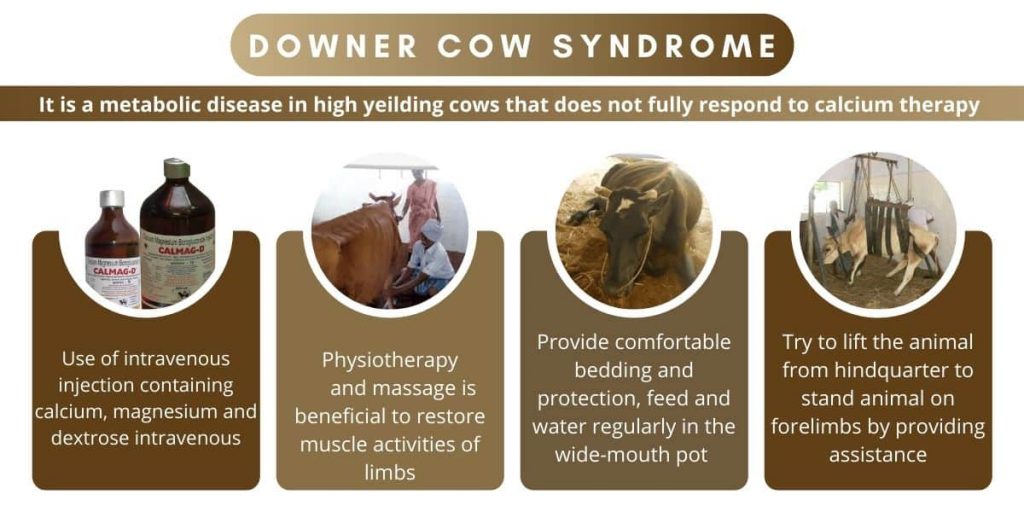
Black Quarter (BQ) Disease in Cattle
Black Quarter Disease or Black Leg is an acute, infectious disease of cattle and sheep, occasionally recorded in buffaloes, characterised by emphysematous swelling in the skeletal muscles and death due to severe toxaemia and muscle necrosis.
Causal Factors: Usually young muscular and healthy animals are more prone to the infection. The definite causative agent is Clostridium chauvoei, a toxin-producing gram- positive anaerobic bacteria.
Animals affected: Cattle, buffaloes, sheep are generally prone to the disease, very rare in goat and other animals.
Spread of the disease: It is soil borne infection transmitted through wound, injection needle or by ingestion (especially when there are oral abrasions). The organisms are usually deep in soil but outbreaks could occur post-earth moving operations.
Clinical signs: Initially high fever, lameness, with severe depression are classical signs of black quarter disease. Animal stops eating and rumination. Crepitating and gaseous swelling of the affected muscles of hind quarters and shoulders leading to hot and painful swelling is very characteristic. If not treated immediately, death may occur within 12-36 hours due to severe toxaemia.
Post-mortem findings: The skin over the swelling appears dark with oozing dark coloured offensive smelling fluid. Crepitating swelling when cut open shows oozing of dark red fluid with bubbles with rancid odour. The affected muscles on palpation appear sponge-like with presence of gas bubbles indicating necrotizing haemorrhagic myositis (due to toxin). Usually, the spleen is enlarged and haemorrhagic.
Diagnosis of Balck Quarte Disease
- Usually easy to diagnose because of typical symptoms
- Bacteriological examination of exudate smears made from affected portions reveals cigar shaped rods.
Material Required for Laboratory Examination
- Exudate from creapitating swelling in a sterile vial on ice for culture and typing.
- Exudate smears
- Dead Animal
- Exudate from crepitating swelling on ice
- Exudate smears
- Affected muscle piece on ice
Laboratory Diagnosis
- Examination of exudate smear
- Biological tests in guinea pigs
Treatment of Balck Quarte Disease
- Dressing of affected lesions with local injection of penicillin.
- Inj. Penicillin in large dose and Oxytetracyclin are the antibiotic of choice. Third generation cephalosporin can also be injected.
- Treatment is usually ineffective in an advanced septicaemic stage.
- Antibiotic therapy was found to be effective when administered within 12 hours of the appearance of clinical symptoms.
Prevention and control
- In endemic area, vaccinate all the animals above 6 months of age before the onset of monsoon.
- The vaccine should be administered as per the instructions of manufacturers. Burning of the upper layer of soil with straw to eliminate the spores in endemic areas.
- Sprinkle lime or disinfectant over the carcass at the time of the burial.
Read More: Diagnosis and Treatment of Downer Cow Syndrome
| Dr. V. M. Bhuktar
Former I/c Joint Commissioner A. H. Western Regional Disease Diagnostic Laboratory (WRDDL) Pune M.S |
Dr. D. M. Chavan
Former Additional Commissioner of Animal Husbandary, Maharashtra |

